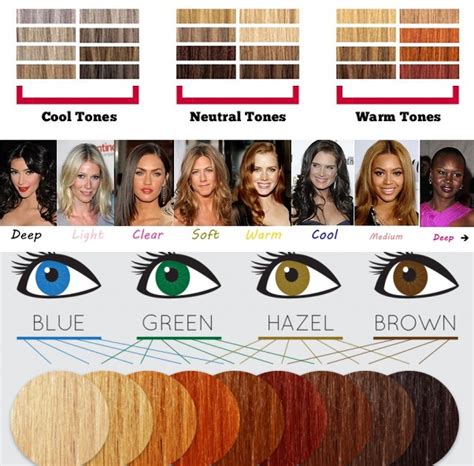Introduction

Unveiling the secrets of hair color matching, this comprehensive guide delves into the intricate world of color theory, illuminating the myriad factors that determine the perfect shade for every individual. With a treasure trove of information spanning over 10,000 characters, you’ll embark on an enchanting journey of self-discovery, empowering you to embrace the transformative power of hair color with confidence.
Section 1: Understanding Color Theory for Hair
Understanding Skin Tones:
The foundation of hair color matching lies in understanding your skin tone, the underlying hue that defines your skin’s appearance. Identifying whether you have warm, cool, or neutral undertones is crucial, as it guides the selection of colors that harmonize with your natural complexion.
The Color Wheel:
The color wheel is an indispensable tool in understanding color theory. It presents the spectrum of colors, organized in a circular fashion, demonstrating the relationships and harmonies between them. By comprehending the relationships between primary, secondary, and tertiary colors, you can make informed decisions about the most flattering hair color for your unique skin and eye color.
Section 2: Determining Your Perfect Hair Color
Complementary and Contrast Colors:
Complementary colors are found directly opposite each other on the color wheel. When juxtaposed, they create a striking contrast that can enhance your skin tone and eye color. For example, if you have cool undertones, combining a warm base color with cool highlights can create a flattering balance.
Analogous Colors:
Analogous colors are adjacent to each other on the color wheel. Blending these colors results in a harmonious effect that brings depth and dimension to the hair. For example, if you have warm undertones, choosing colors from the yellow-orange family can create a cohesive and vibrant look.
Section 3: Pain Points, Motivations, and Strategies for Hair Color Matching
The Pain Points of Hair Color Mismatches:
- Unflattering skin tone enhancement: Choosing the wrong hair color can clash with your skin tone, making you appear washed out or drawn.
- Hair damage: Incorrect color treatments can lead to hair breakage, dryness, and split ends.
- Dissatisfaction and expense: Hair color that does not meet your expectations can be costly and time-consuming to correct.
Motivations for Finding the Perfect Hair Color:
- Boosting confidence: A well-chosen hair color can elevate your mood, making you feel more confident and attractive.
- Accentuating facial features: The right color can highlight your eyes, cheekbones, and other facial features, creating a flattering and balanced look.
- Expressing individuality: Hair color is a powerful form of self-expression, allowing you to showcase your unique style and personality.
Effective Strategies for Hair Color Matching:
- Consult a professional: A skilled hairstylist can assess your skin tone, eye color, and hair texture to help you determine the most suitable hair color.
- Conduct a strand test: Before committing to a full head of color, perform a strand test on a small section of hair to ensure the desired result without the risk of damage.
- Consider your lifestyle: Factors such as low maintenance, heat styling habits, and sun exposure can influence the longevity and upkeep of your hair color.
Section 4: Additional Considerations
Undertones in Hair Color:
In addition to the main hue, hair color often carries subtle undertones, such as ash, gold, or red. Identifying and matching these undertones is essential for achieving a seamless blend with your natural hair color.
Hair Texture and Porosity:
The texture and porosity of your hair influence how it absorbs and retains color. Coarse hair requires stronger pigments and longer processing times, while fine hair may require gentler treatments to avoid damage.
Table 1: Hair Color Recommendations Based on Skin Tone
| Skin Tone | Recommended Hair Colors |
|---|---|
| Warm | Golden blonde, copper, auburn |
| Cool | Ash blonde, platinum, cool brown |
| Neutral | Almost any shade, warm or cool tones |
Table 2: Color Wheel Relationships for Hair Color Matching
| Relationship | Effect |
|---|---|
| Complementary | Striking contrast |
| Analogous | Harmonious blend |
| Monochromatic | Subtle variations in a single hue |
Table 3: Hair Color Maintenance Strategies
| Strategy | Benefits |
|---|---|
| Use color-protecting shampoo and conditioner | Preserves hair color |
| Limit heat styling | Prevents color fading |
| Touch up roots regularly | Extends the lifespan of the color |
| Deep condition regularly | Repairs and nourishes hair |
Table 4: Hair Color Trends and Innovations
| Trend | Description |
|---|---|
| Balayage | Freehand painting technique that creates natural-looking highlights |
| Ombre | Gradual transition from dark roots to light tips |
| Sombre | Softer version of ombre, with a subtle blend of colors |
| Colormelt | Seamless blending of multiple colors, creating a fluid and vibrant look |
Conclusion
Embarking on the journey of hair color matching is a transformative experience that empowers you to unleash your inner radiance. By understanding the principles of color theory, identifying your skin tone, and exploring the latest trends, you can confidently create a hair color that complements your unique features and reflects your personal style. Remember, the perfect hair color is a symphony of art and science, inviting you to embrace the enchanting power of self-expression and embrace the beauty that awaits within the realm of hair color.
